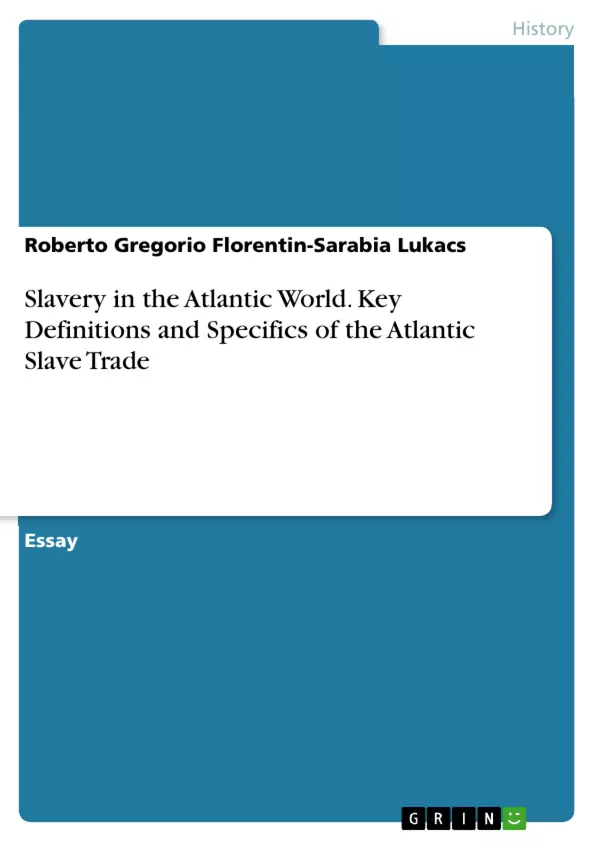The term slavery is a broad definition and a wide-ranging concept which is not always being accurately applied. In the emerging colonial area of the 16th and the following centuries up until the 19th century the term had regained new dimensions of definition. A new form of slavery with an economic element on a scale of several centuries had emerged. The Atlantic slavery had reshaped the terminology and is nowadays responsible for the widespread view on the slave trade of the colonial period. Specifically, how do we understand slavery and what are some of the key definitions of it that marked the Atlantic slave trade and made it distinguishable from the other types of slave trade that had existed throughout mankind’s history and periods?
One important aspect was that slavery in the form of the Atlantic slave trade was its institutionalized character. It was, even though loosely, a representative body, an institution with norms and traits of certain people with a certain cultural background. In the exemplary essay of David Eltis on “The volume and structure of the transatlantic slave trade: A Reassessment” specific European empires and their trading culture were being more thoroughly researched such as the British, the Spanish, the Portuguese, the Dutch, the French and to some extent the Danish commercial Atlantic trade. Another three key elements of the Atlantic slave trade are the implications of violence, exercised by humans upon other humans, implied physical coercion, the forceful commitment to hard and dirty labor, and implied restrictions in the freedom of mobility.
Table of Contents
- Slavery in the Atlantic world
- The role of the Dutch trading empire
- Brazilian sugar trade
- French colonial system
- Slavery of native people on the Americas
- The impact of the transatlantic slave trade
- The question and business of slavery
- Slavery, a sustainable and profitable business?
- The second slavery complex
- Abolitionist movements
Objectives and Key Themes
This text explores the history of slavery in the Atlantic world, focusing on its evolution, economic impact, and the role of various European powers in the transatlantic slave trade. It aims to delve into the complexities of the institution of slavery, its different forms, and the factors contributing to its development and eventual decline.
- The origins and development of the Atlantic slave trade
- The economic and political factors driving the transatlantic slave trade
- The role of European powers, particularly the Dutch, in the slave trade
- The impact of slavery on the Americas and Africa
- The rise of abolitionist movements and the eventual decline of slavery
Chapter Summaries
- Chapter 1: Slavery in the Atlantic world: This chapter defines the concept of slavery in the context of the Atlantic world, highlighting its institutionalized character and key elements, including violence, forced labor, and restricted mobility. It also discusses different types of slavery throughout history, contrasting them with the specific model of the colonial period.
- Chapter 2: The role of the Dutch trading empire: This chapter focuses on the role of the Dutch trading empire in the Atlantic slave trade. It explores the Dutch trading strategies, their economic expansion, and their involvement in the Brazilian sugar trade. It also highlights the influence of private traders and the Dutch state in shaping the colonial trade sector.
Keywords
Key terms and concepts discussed in this text include the Atlantic slave trade, colonialism, European expansion, Dutch trading empire, Brazilian sugar trade, slavery, forced labor, violence, abolitionist movements, economic exploitation, and the impact of slavery on the Americas and Africa.
- Arbeit zitieren
- Roberto Gregorio Florentin-Sarabia Lukacs (Autor:in), 2020, Slavery in the Atlantic World. Key Definitions and Specifics of the Atlantic Slave Trade, München, GRIN Verlag, https://www.hausarbeiten.de/document/1191932


